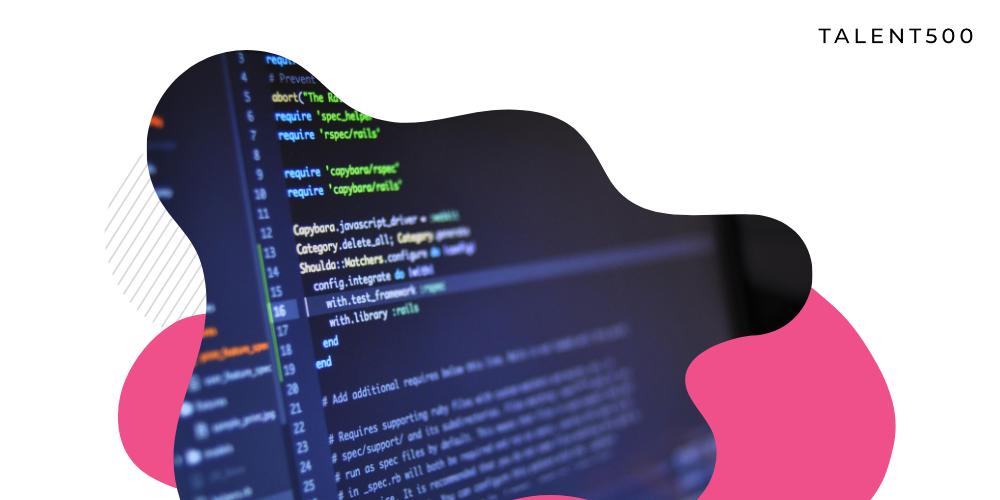Frontend development has come a long way in the last decade. The domain is rapidly developing with new technologies to utilize modern infrastructure more efficiently. Of all the technologies, React remains a significant player. According to Statista, ReactJS is the second most widely used JavaScript library, with a market share of 42.62%.
Developers are using ReactJS to make their Ruby on Rails applications more powerful. This article will look at things you need to consider while using React with Rails.
When to use React and Rails?
Ruby on Rails and React are both standalone frameworks. You can build applications using either Rails or ReactJS, but there are scenarios where combining the two offers a technological edge. If you are not sure when to use React with Rails, here are some preferred applications:
- Complex simple-page applications
- Applications with a large volume of dynamic content
- Mobile-first applications that need to be scaled rapidly
- Applications handling larger database
- Applications with higher performance speed
If you are working on any such application, then you can plan to use the two technologies in combination.
Now let’s look at the considerations to make.
1. Is fast development possible?
Ruby on Rails has many built-in modules and code libraries that developers can use to rapidly build enterprise applications. There are also options to strengthen communication with frontend libraries like ReactJS. However, to reduce cost and development time, you need to ensure that developers in your team understand how to build a Ruby on Rails app with a ReactJS frontend. Some prerequisites exist to fully utilize the combination for product development, like understanding protocols to transfer data between Rails backend and React frontend.
Also, there are tricks to clean up your React components that can make your apps much faster. It helps you scale the performance of the applications without increasing the resources.
2. What is your app speed requirements?
Not every app benefits from using React and Ruby on Rails as the tech stack. If your app has to handle a high volume of dynamic data or too much traffic, you can build your app using any one of the frameworks.
However, it’s the best tech stack if your app needs to load lightning fast, even with dynamic content, and handle increasing traffic. When you use Ruby on Rails with React, you can reduce the server response time by up to 80%, making your apps much faster. The low speed of web apps is one of the main reasons businesses lose users.
If minimizing the server request time is your priority, you should consider Rails and ReactJS for your application.
3. Cut down memory usage
It is a common issue for applications as they scale. If not managed correctly, increased memory usage can lead to poor performance and even timeouts. The solution lies in optimizing the memory utilization by the app. React with Rails API can be used to prevent unnecessary memory usage by optimizing processes to allocate and empty available space more efficiently. Egghead.io, an online learning platform for web developers, struggled with timeouts every hour before they decided to deploy a React with Ruby on Rails solution. It significantly improved their application’s performance and improved memory usage.
4. Development speed, quality & business model
App development is increasingly popular, driven by the increase in the use of smartphones. The ‘time to market’ is significant in a competitive domain. It simply determines how much time it will take to build and publish an application. When Rails is combined with React, you have a complete technology stack to develop and deploy apps in the least time possible. Also, if you aim to offer an app based on the freemium model, Rails works great because it’s a cheaper technology. Also, it provides additional features like scalability once your user base starts growing.
Another reason to try a combination of React with Ruby on Rails is that you can build a fully functional prototype fast. It helps you test the market and get feedback from the users to guide appropriate future decisions. However, if you aim to earn revenues from ads with a huge base of free users, you should not use Rails with React as it is not entirely a free option.
Conclusion
Whether or not you should use React with Ruby on Rails depends on the project’s requirements. There is no straightforward answer, as the tech stack is not a universal solution but a potential combination for developing dynamic applications with innumerable micro-interactions. If you are building large scalable web applications, you need to consider the points mentioned above.
Talent500 offers app developers a platform to connect with Fortune 500 companies and fast-growing global startups. Join our elite pool of talented developers and get hired by the best tech companies by signing up here.






Add comment